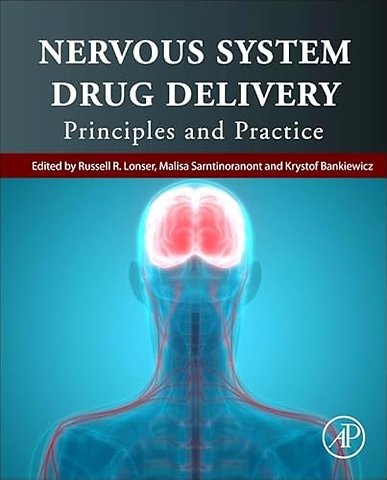<p>Section I. Physiology of Nervous System Drug Delivery<br>1. Fundamentals of Brain–Barrier Anatomy and Global Functions<br>2. Blood-Brain Barrier in Disease States <br>3. Pharmacokinetics of Systemic Drug Delivery<br>4. Pharmacokinetics of Drug Delivery Past the Blood-Brain Barrier<br>5. Anatomy and Physiology of Cerebrospinal fluid Dynamics <br>6. Pharmacokinetics of Polymeric Drug Delivery <br>7. Pharmacokinetic Models of Convection-Enhanced Drug Delivery<br>8. Mechanisms and Clinical Applications of Stem Cell Therapy</p> <p>Section II. Nervous System Drug Delivery Techniques<br>9. Intravenous and Intravascular Drug Delivery<br>10. Blood-Brain Barrier Disruption <br>11. Ultrasonic Methods <br>12. Nanoparticles for Brain Tumor Delivery<br>13. Solute Transport in the Cerebrospinal Fluid: Physiology and Practical Implications<br>14. Drug-impregnated Polymer Delivery <br>15. Immunomodulatory Methods <br>16. Convection-Enhanced Drug Delivery in the Central Nervous System<br>17. Stem Cell Transplantation for Neurological Disease: Technical Considerations and Delivery Devices <br>18. CRISPR–Cas Gene Editing for Neurological Disease</p> <p>Section III. Clinical Application of Nervous System Drug Delivery<br>19. Drug and Disease-Specific Paradigms for Drug Delivery to the Central Nervous System<br>20. Dynamic Contrast-Enhanced Magnetic Resonance Imaging in Brain Tumors<br>21. Clinical Methods of Nervous System Drug Delivery for Tumors<br>22. Delivery Methods for Treatment of Genetic Disorders<br>23. Direct Convective of Nervous System Drug Delivery for Patients with Neurodegenerative Disorders<br>24. Central Nervous System Drug Delivery after Ischemic or Hemorrhagic Stroke<br>25. Intrathecal Drug Delivery for Cancer Pain</p>

